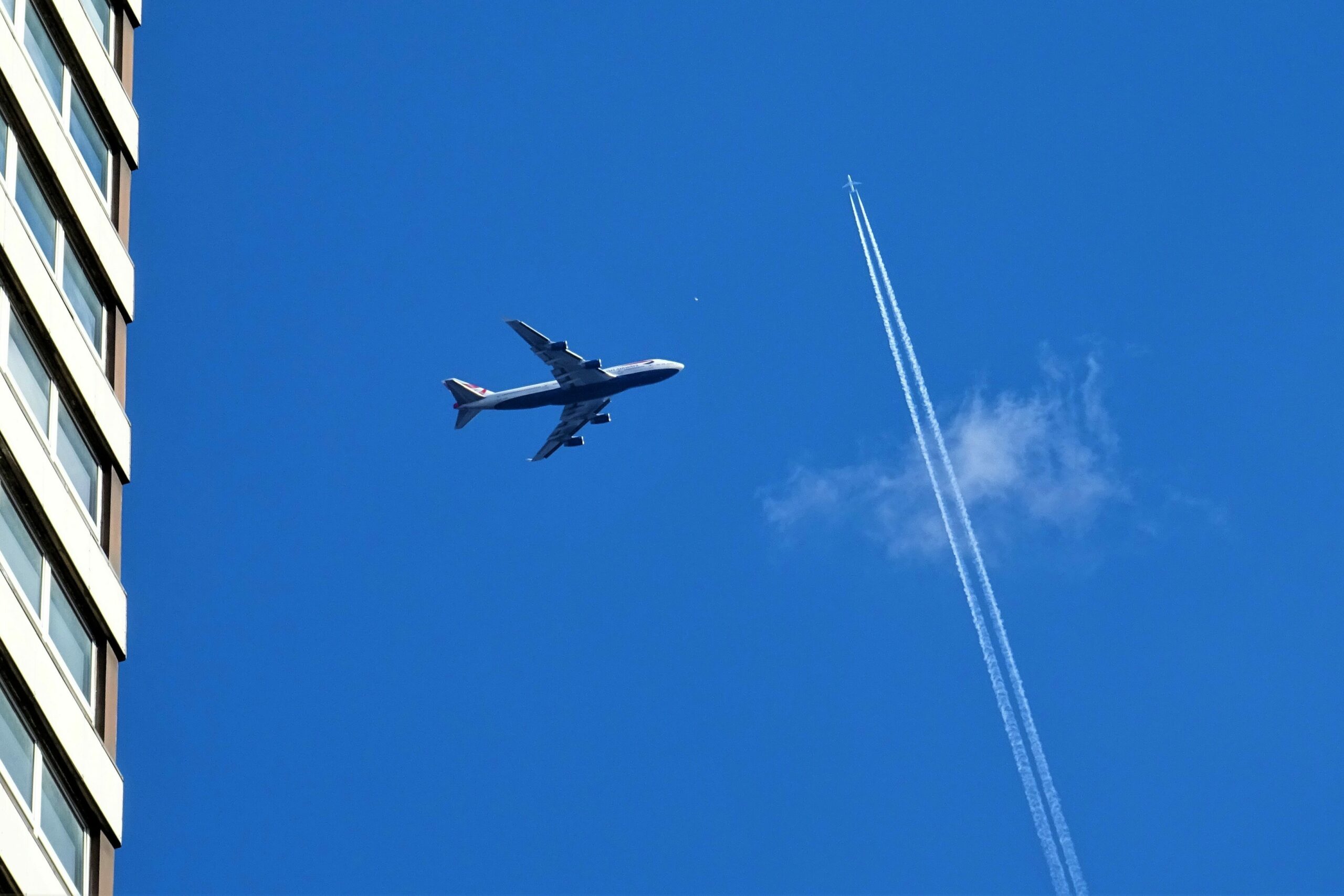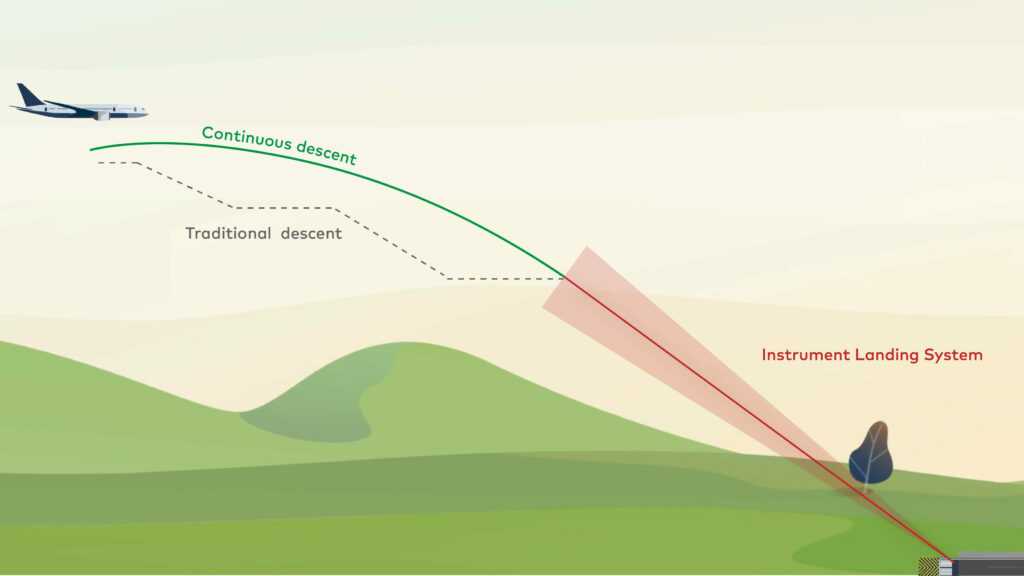commercial airports have Established flight paths for aircraft arriving and departing.
Arrival and departure paths are like three-dimensional roadways that aircraft follow to and from the airport. Routes are assigned to pilots based on the flight’s origin/destination, as well as the available in-use runways at the arrival airport. Most commercial passenger aircraft will follow these routes, however, smaller turboprops and propeller planes may be directed outside of them to clear the airspace for larger and faster aircraft.


Arrivals
Upon nearing the airport, arrivals make initial contact with Air Traffic Control (ATC) who provide the pilots with a direction (or vector) and altitude in which to fly. This is to ensure safe separation from other aircraft that may also be arriving and departing. Often ATC provides instructions to pilots to join an established approach procedure to act as a ‘roadmap’ for how to safely approach and land on the runway
A practice called Continuous Descent Operation (CDO) is often used in order to reduce any potential noise impact on the ground and minimize fuel burn and resulting emissions. The operation requires both ATC and the pilots to work together to glide the aircraft to landing with minimal throttle use. It requires skill and detailed planning, so in periods of high traffic, it may not be possible to fly the optimum CDO.
Departures
Departures taxi to the runway where they await clearance from Air Traffic Control (ATC). The aircraft is fully laden with fuel, passengers, luggage, and cargo, and a high-power setting is required to accelerate the aircraft along the runway to achieve flight. Aircraft depart in a straight line from the runway until they have reached a sufficient altitude before turning onto a set departure route to their destination. This allows the aircraft to climb quickly and maintain safe separation from other aircraft as it departs.
Departure routes provide point-to-point navigation for pilots to follow on their way out of an airport’s busy airspace.


Want to see more?
View live flight tracks and noise levels using our WebTrak Flight and Noise tracker.
 Previous
Next
Previous
Next 

